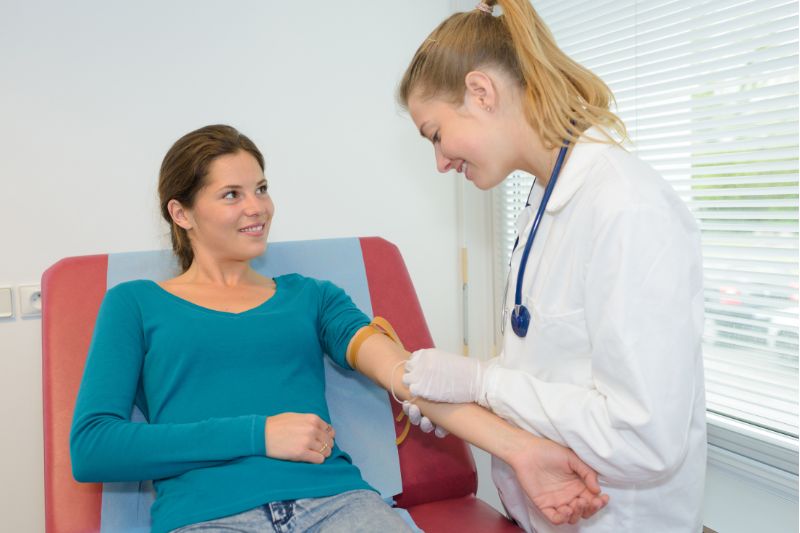No products in the cart.
Texas Phlebotomy Certification Requirements and Process

Becoming a certified phlebotomist in Texas requires taking an approved certification class and following the proper steps to receive your license. This blog post will explain the requirements, what classes are available, and how you can start the process of becoming a certified phlebotomist in Texas.
What is a Phlebotomy Certification?
Phlebotomy certification is issued by the American Society for Clinical Pathology (ASCP) and is a requirement for anyone who wants to practice as a professional phlebotomist in Texas. The certification requires the completion of an accredited course and passing an exam that tests the student’s knowledge of blood collection techniques, safety protocols, and patient care practices.
How Does Taking a Class Help?
Taking an accredited class is one of the most efficient ways to prepare for your ASCP certification exam. A good class will provide students with hands-on training in proper blood collection techniques as well as comprehensive instruction on relevant topics such as anatomy and physiology, medical terminology, lab operations, quality control procedures, etc. Additionally, many classes include study materials such as books or online modules that can help students effectively prepare for their exams.
Texas Phlebotomy Certification Requirements
To become a certified phlebotomist in Texas, you must take an approved certification course. The Texas Department of State Health Services (DSHS) requires that all applicants for phlebotomy certification have a basic knowledge of anatomy and physiology, medical terminology, infection prevention, and control, safety guidelines, specimen collection procedures, laboratory operations, and quality assurance practices. You must also complete a minimum of 40 hours of classroom instruction as well as 10 hours of clinical practice or externship in order to receive your certification.
Classes Offered
There are several organizations that offer approved certification classes for those wishing to become certified phlebotomists in Texas. These include local community colleges, private training schools, hospitals, or healthcare facilities offering on-the-job training programs and online courses that satisfy the DSHS’s requirements for certification. It is important to research each organization thoroughly before enrolling in a course to ensure that it meets the DSHS’s standards for certification.
How to Start the Process
Once you have chosen an approved certification program, enroll by filling out the required paperwork and paying any necessary fees associated with the class. Attend all classes required by the program and complete any clinical practice or externship components included in your course curriculum. Once you have completed all requirements associated with your class, contact the DSHS to request application materials for your certification exam.
Fill out these documents completely and submit them along with any other necessary documentation such as proof of completion of your training program or exam scores from other certifying organizations like AMT or NHA. Once your application is approved by the DSHS you will be eligible to take the final examination required for licensure as a certified phlebotomist in Texas.
Why Take a Texas Phlebotomy Certification Class?
There are several reasons why taking a Texas Phlebotomy Certification Class might be beneficial for aspiring phlebotomists. For one thing, these classes are often taught by experienced professionals who have extensive knowledge about the profession and can provide valuable guidance and insight throughout the learning process.
Additionally, by taking an accredited class in Texas, you’ll have access to local resources that can help you further your career after completing your certification exam—such as networking opportunities or job placement assistance programs. Finally, many courses offer flexible schedules so that working professionals don’t have to take time off from their jobs in order to attend class sessions.
Becoming a certified phlebotomist in Texas is not an easy task but it is possible if you are willing to put in time and effort into studying for exams and attending classes. By researching accredited organizations offering courses that meet the criteria set forth by the DSHS, completing all required classroom instruction as well as any clinical practice hours included in your course curriculum, and submitting all relevant paperwork to obtain application materials from the DSHS for your licensure exam and passing this final examination with flying colors you can become a certified phlebotomist in Texas!
Start today by researching organizations offering approved certification classes so that you can begin working towards becoming a licensed professional soon!
















Leave a Reply